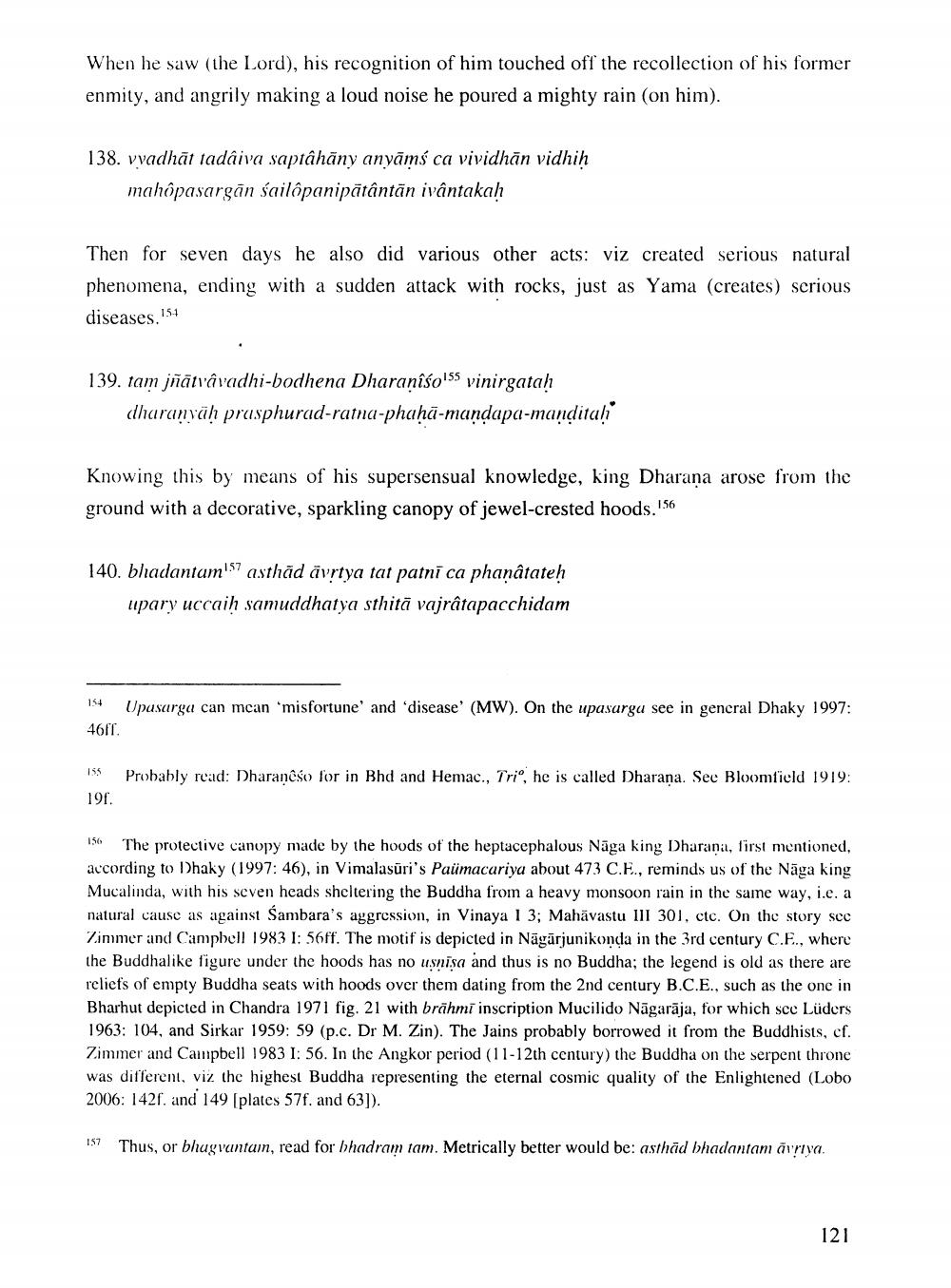________________
When he saw (the Lord), his recognition of him touched off the recollection of his former enmity, and angrily making a loud noise he poured a mighty rain (on him).
138. vvadhāt tadâiva saptâhāny anyāmś ca vividhān vidhih
mahôpasargan sailốpanipätấniãn ivantakah
Then for seven days he also did various other acts: viz created serious natural phenomena, ending with a sudden attack with rocks, just as Yama (creates) scrious diseases. 151
139. tam jñātvavadhi-bodhena Dharaniso155 vinirgatah
dharanväh prasphurad-ratna-phaḥā-mandapa-manditah
Knowing this by means of his supersensual knowledge, king Dharana arose from the ground with a decorative, sparkling canopy of jewel-crested hoods.156
140. bhadantam57 asthäd ävrtya tat patni ca phantateh
upary ucсaih samuddhatya sthitā vajrâtapacchidam
154 Upasarga can mcan 'misfortune' and disease (MW). On the upasurga see in general Dhaky 1997: 46f1.
Probably read: Dharanešo for in Bhd and Hemac., Tri", he is called Dharana. See Bloomfield 1919:
155 191.
156 The protective canopy made by the hoods of the heptacephalous Nāga king Dharana, first mentioned, according to Dhaky (1997: 46), in Vimalasūri's Paümacariya about 473 C.E., reminds us of the Nāga king Mucalinda, with his seven heads sheltering the Buddha from a heavy monsoon rain in the same way, i.e. a natural cause as against Sambara's aggression, in Vinaya I 3; Mahāvastu III 301, ctc. On the story sco Zimmer and Campbell 1983 1: 56ff. The motif is depicted in Nāgārjunikonda in the 3rd century C.E., where the Buddhalike figure under the hoods has no usnisa and thus is no Buddha; the legend is old as there are reliefs of empty Buddha seats with hoods over them dating from the 2nd century B.C.E., such as the one in Bharhut depicted in Chandra 1971 fig. 21 with brāhmi inscription Mucilido Nāgarāja, for which scc Lüders 1963: 104, and Sirkar 1959: 59 (p.c. Dr M. Zin). The Jains probably borrowed it from the Buddhists, cf. Zimmer and Campbell 1983 1: 56. In the Angkor period (11-12th century) the Buddha on the serpent throne was different, viz the highest Buddha representing the eternal cosmic quality of the Enlightened (Lobo 2006: 1426. and 149 (plates 57f. and 63]).
157 Thus, or bhugvantai, read for bhadram tam. Metrically better would be: asthäd bhadantam arriva.
121




